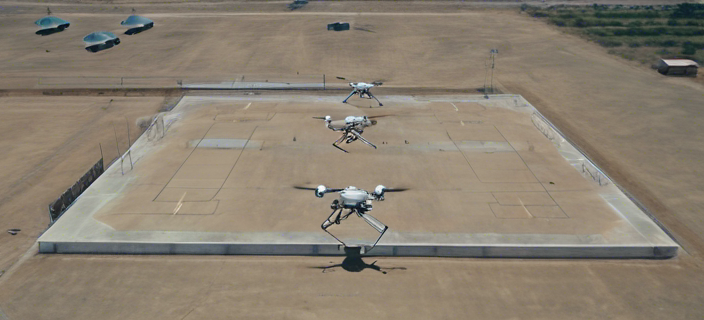Drones and Robotic Tech Pose Threat to US Nuclear Security
The leader of Strategic Command, Air Force Gen. Anthony Cotton, has raised concerns about the impact of unmanned technologies, including drones, on the US nuclear stockpile and associated infrastructure. In his 2024 Strategic Posture Statement to Congress, Cotton highlighted the challenges posed by the proliferation of drones and other robotic systems used for intelligence gathering and potential attacks.
According to Cotton, the use of sophisticated uncrewed systems presents a significant challenge to the Defense Department and the nation’s nuclear enterprise. The situation is further complicated by the technological race with adversaries like Russia and China, leading to a need for enhanced interception and neutralization capabilities.
 Illustration of a drone surveillance
Illustration of a drone surveillance
Counter-Drone Efforts and No Drone Zones
To address the growing threat, STRATCOM conducted tests on counter-drone weaponry in 2022 and 2023 to assess their effectiveness. While specific results were not disclosed, the focus was on understanding and countering the evolving drone technology landscape.
“No drone zones” have been established at military bases and nuclear facilities to safeguard against potential drone-related risks. These zones cover critical sites such as the Los Alamos National Laboratory, the Y-12 National Security Complex, and the Nevada National Security Site, where counter-unmanned aerial system technologies are being developed and deployed.
Advancements in Defense Technologies
During a visit to the Nevada site, officials showcased cutting-edge equipment, including the Anvil drone developed by Anduril Industries. The Anvil drones are designed to intercept and neutralize threats by either collision or controlled detonation, enhancing the defense capabilities against drone incursions.
Frank Rose, the deputy of the National Nuclear Security Administration, emphasized the importance of developing tools to counter current and future unmanned aerial threats. The focus is on not only addressing present challenges but also preparing for emerging risks in the evolving technological landscape.
Conclusion
As the use of drones and robotic technology continues to expand globally, the need for robust defense mechanisms to protect critical infrastructure, including the US nuclear arsenal, becomes increasingly vital. Military officials and defense experts are actively working on enhancing counter-drone capabilities to mitigate the risks posed by unmanned systems in the national security domain.













